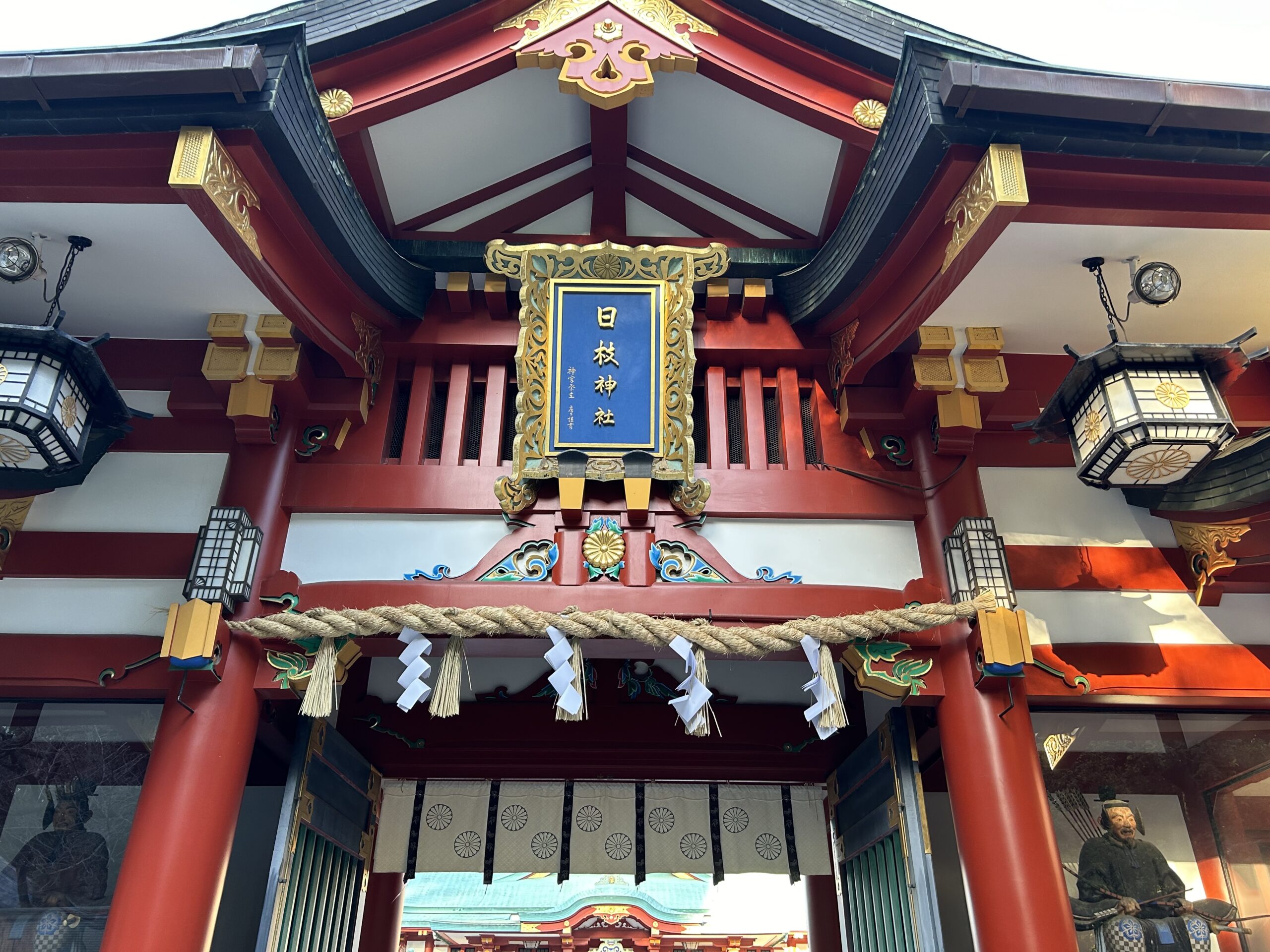Are you familiar with Hie Shrine located in Akasaka, Tokyo? Despite being in the heart of Tokyo, in Nagatacho, Hie Shrine is one of Japan’s most prestigious shrines. What exactly is enshrined at Hie Shrine? Did you know that it also enshrines sacred monkeys? There are even rumors that it can be intimidating due to its strong spiritual presence. This time, we will introduce the history, highlights, and trivia of the lesser-known Hie Shrine.
The History of Hie Shrine
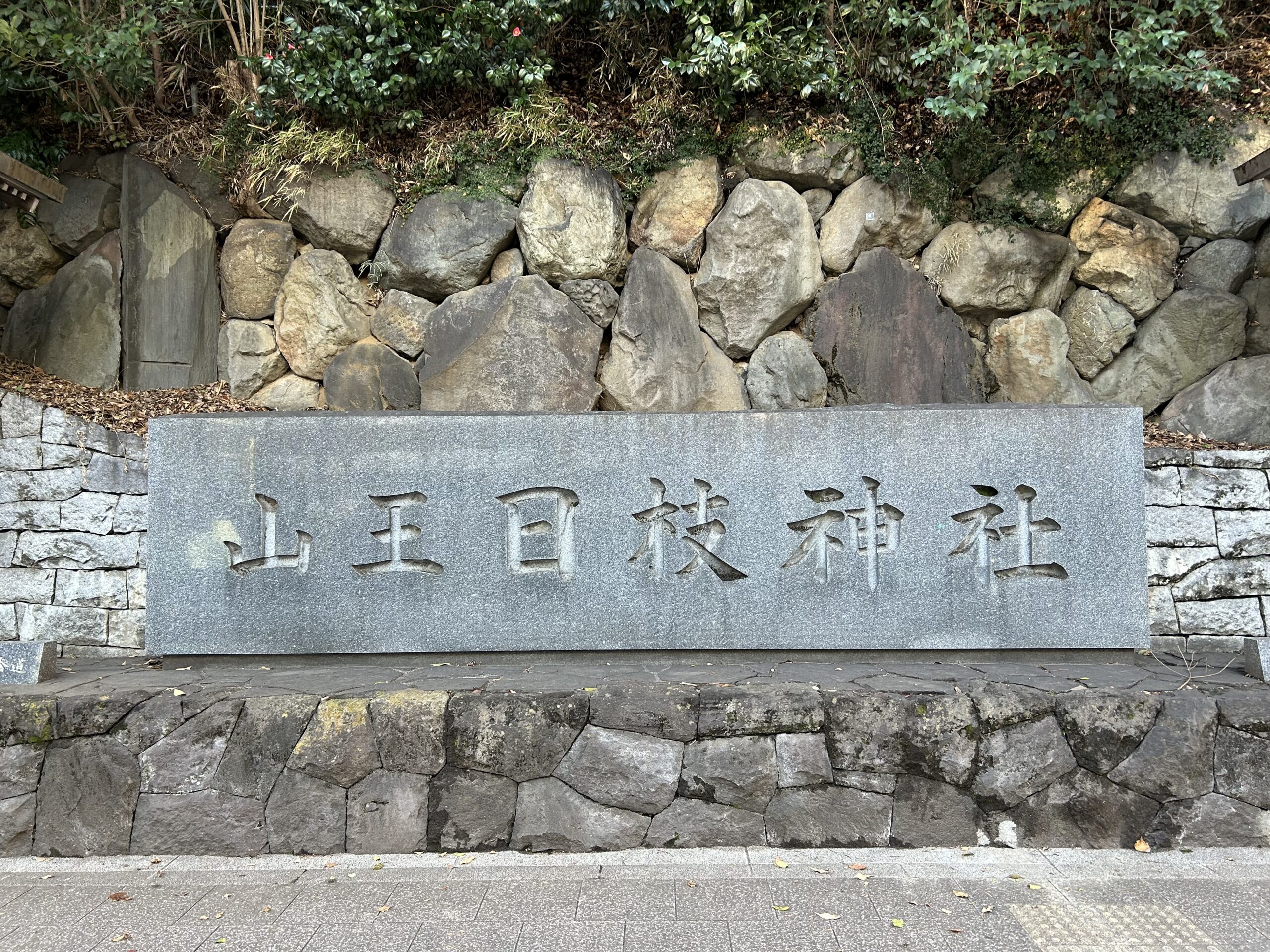
First, let's look at the history of Hie Shrine. The history of Hie Shrine has undergone many transformations from medieval Japan to the present day. The shrine began in the early Kamakura period when Chichibu Shigetane dedicated it as Sanno-gu in his residence. Later, during the Sengoku period, Ota Dokan relocated Kawagoe Sanno-sha to this site when constructing Edo Castle. When Tokugawa Ieyasu made Edo Castle his residence, he built a new shrine building at Momijiyama within the castle grounds.
However, after the Great Fire of Meireki in 1657, which devastated Edo, the shrine was relocated to a scenic area called Hoshigaoka as part of the rebuilding efforts. Due to this relocation, Hie Shrine became a special shrine moved from within Edo Castle, earning reverence from successive shoguns and many people, and establishing its status as a guardian deity of the Imperial Castle. Following the Meiji Restoration and the establishment of Tokyo as the capital, Hie Shrine was elevated to the highest rank of Kanpei-taisha (imperial shrine), continuing its significance as a state shrine.
During the Great Kanto Earthquake of 1923, many shrines suffered damage, but Hie Shrine comparatively escaped serious damage. The shrine of Tokyo Daijingu was temporarily moved to Hie Shrine’s precincts. Thanks to the efforts of parishioners and worshippers, a new building was completed in 1958, once again allowing visitors to admire its majesty atop Sanno Hill.
Thus, the long history of Hie Shrine serves as a mirror reflecting Japan’s historical transformations from the Edo period to the present. The shrine’s significant historical and cultural value continues to be respected and revered by many people today.
The Highlights of Hie Shrine
Next, let's look at the highlights of Hie Shrine. These are must-sees for anyone planning to visit Hie Shrine.
Sanno Torii
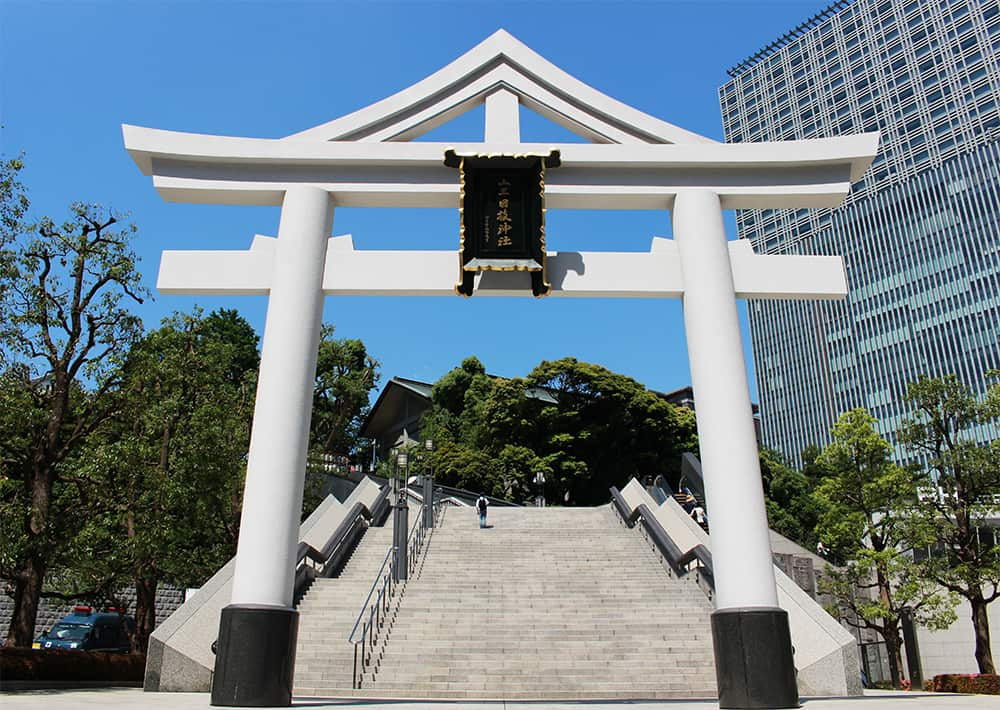
One of the symbols of Hie Shrine is the Sanno Torii, which captivates visitors with its unique structure and significance. This distinctive design symbolically integrates the Buddhist worlds of the Womb Realm and Diamond Realm, along with divine teachings, expressing daily compassion and acceptance, the power of strong will, and the sacred energy that unites them.
Hie Shrine features these special Sanno Torii gates at three locations: the Omotesando (front approach), the Urasando (rear approach), and the Nishisando (west approach). Each gate serves as an important entrance to the shrine. It is said that passing through these sacred spaces can purify both body and mind.
Despite being located in Nagatacho, Tokyo's business district, Hie Shrine's grounds offer a lush, open space filled with greenery, providing tranquility and peace away from the hustle and bustle of the city. Passing through the Sanno Torii, visitors are enveloped in a mystical atmosphere, offering a unique and special experience.
(Image Citation: The Gate)
Otoko-zaka
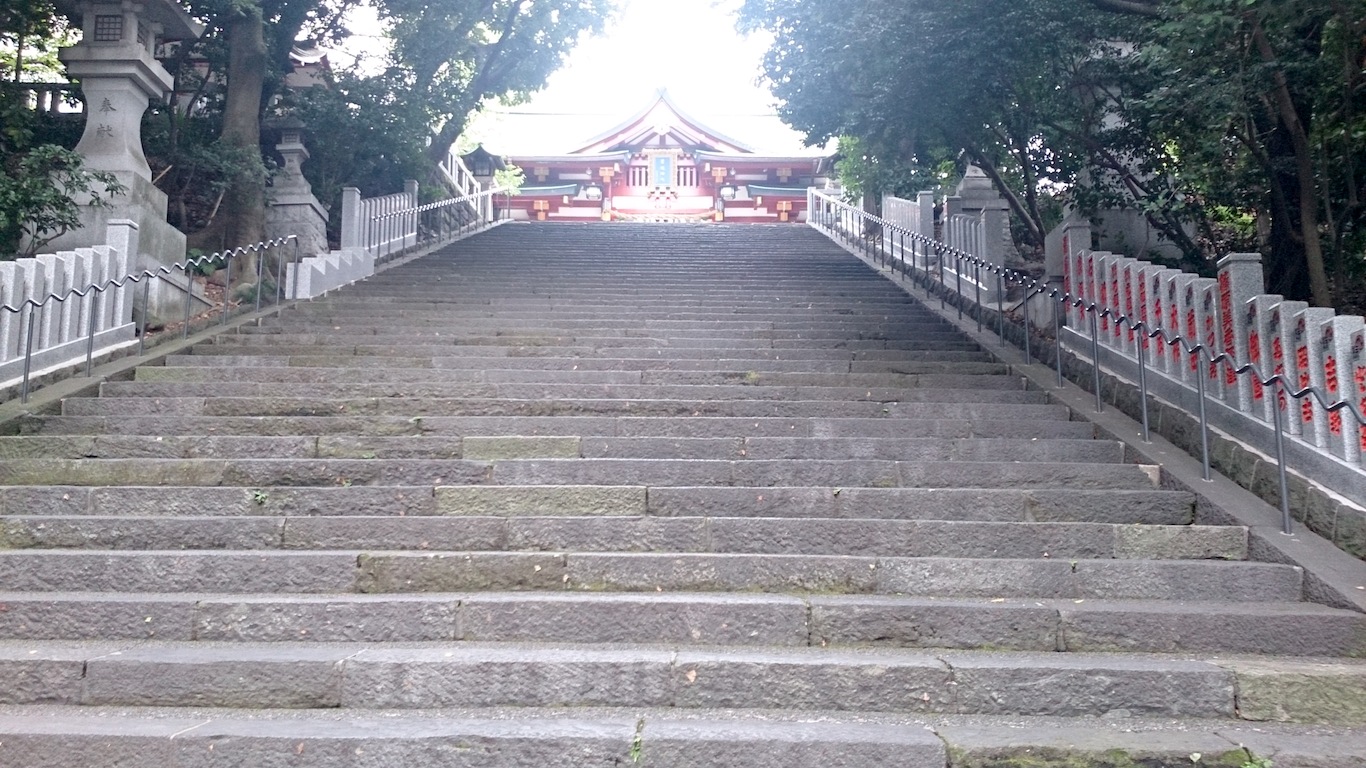
For visiting Hie Shrine, entering from the "Otoko-zaka" (Men's Slope), also known as the "Omotesando" (front approach), is recommended, as it is said to be particularly powerful. Otoko-zaka is considered the most traditional and prestigious route to the shrine, enhancing its sacred atmosphere. As the name suggests, this slope symbolizes strength and courage, characterized by its steep stairs. It is believed to purify and prepare the heart for entering the sacred space.
Otoko-zaka also plays an important role during Hie Shrine's largest festival, the Sanno Festival. The climax of the festival, the mikoshi (portable shrine) procession, enters the shrine grounds via Otoko-zaka. Following this route heightens the solemn atmosphere of the festival and reinforces the shrine's sanctity.
However, the steep stairs of Otoko-zaka may pose a challenge for those with mobility concerns or special considerations. In such cases, the "Onari-zaka," also known as "Onari-zaka" (Women's Slope), provides an alternative route. Historically used by shoguns during their visits in the Edo period, it is also called "Onari-zaka." It is said that by reaching the shrine gate through Onari-zaka and offering a bow, one can receive the same blessings as climbing Otoko-zaka.
(Image Citation: ぶらぶら神社)
Sacred Monkeys
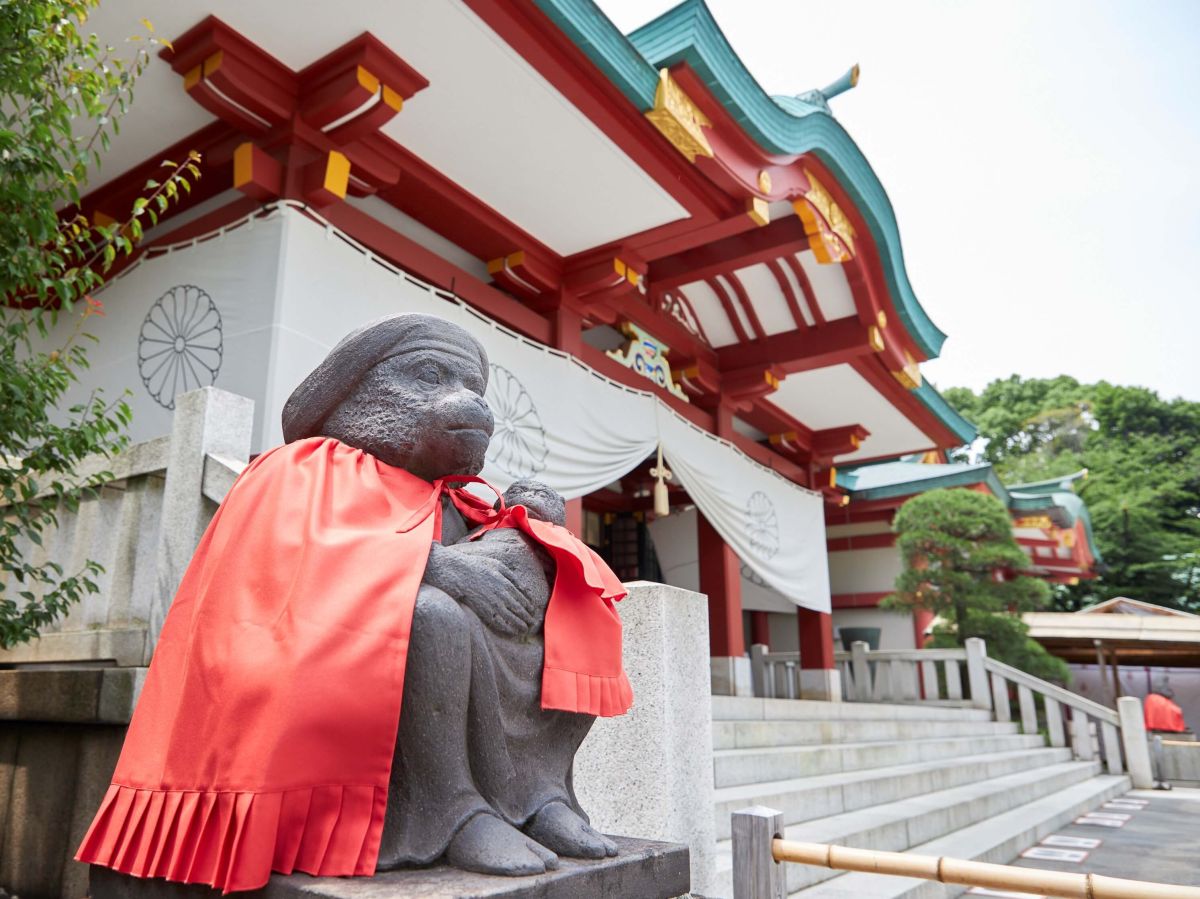
Sanno Inari Shrine
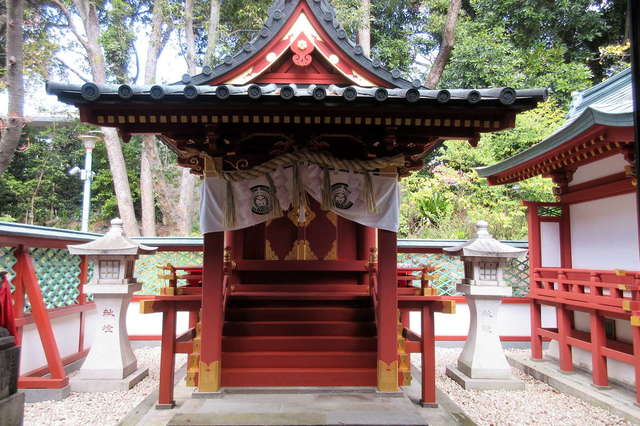
Sanno Inari Shrine, a subsidiary shrine of Hie Shrine, is a special place surrounded by rich nature and deep history. The deity enshrined here is Ukanomitama no Mikoto, the local guardian god of this area. This god, also known as "Uka," represents "grains" or "food," and has long been worshipped as the god of grains, particularly as an Inari deity.
As indicated by the object of its worship, Sanno Inari Shrine is revered as the god presiding over agricultural abundance and blessings. Additionally, the shrine is considered the guardian deity of commerce and industry, attracting visitors who pray for business prosperity and success in their endeavors. Visitors offer ema (votive tablets) and other offerings, expressing their deep faith and gratitude to the deity.
The presence of this subsidiary shrine signifies that the grounds of Hie Shrine have been a place of prayer since ancient times. By visiting Sanno Inari Shrine, worshippers can pray for abundance and success in their daily lives, and reaffirm their appreciation for harmony with nature and the spirit of gratitude.
(Image Citation: 八百万の神)
Sarutahiko Shrine
Sarutahiko Shrine at Hie Shrine has long been revered by travelers and seekers. Sarutahiko-no-Okami, enshrined here, is known in Japanese mythology as the deity who guided the descent of the heavenly grandson. Sarutahiko is revered not only as a guide along physical paths but also as a signpost in life, believed to connect people with important relationships in their work and personal lives.
The group of subsidiary shrines, including Sarutahiko Shrine, can be accessed through an opening at the back right of the main shrine, though this entrance is often overlooked. Be sure not to miss this special place.
Surrounded by beautiful trees, with bright red torii gates and flags, Sarutahiko Shrine offers a striking contrast to the urban landscape of towering buildings. This sacred space provides visitors with a sense of tranquility and a sacred atmosphere.
As the guardian deity of travelers and a guide in life, Sarutahiko Shrine is an important object of faith for many people. The shrine is a source of strength for those seeking safety in their travels, the courage to embark on new paths, and important connections in their lives.
Senbon Torii
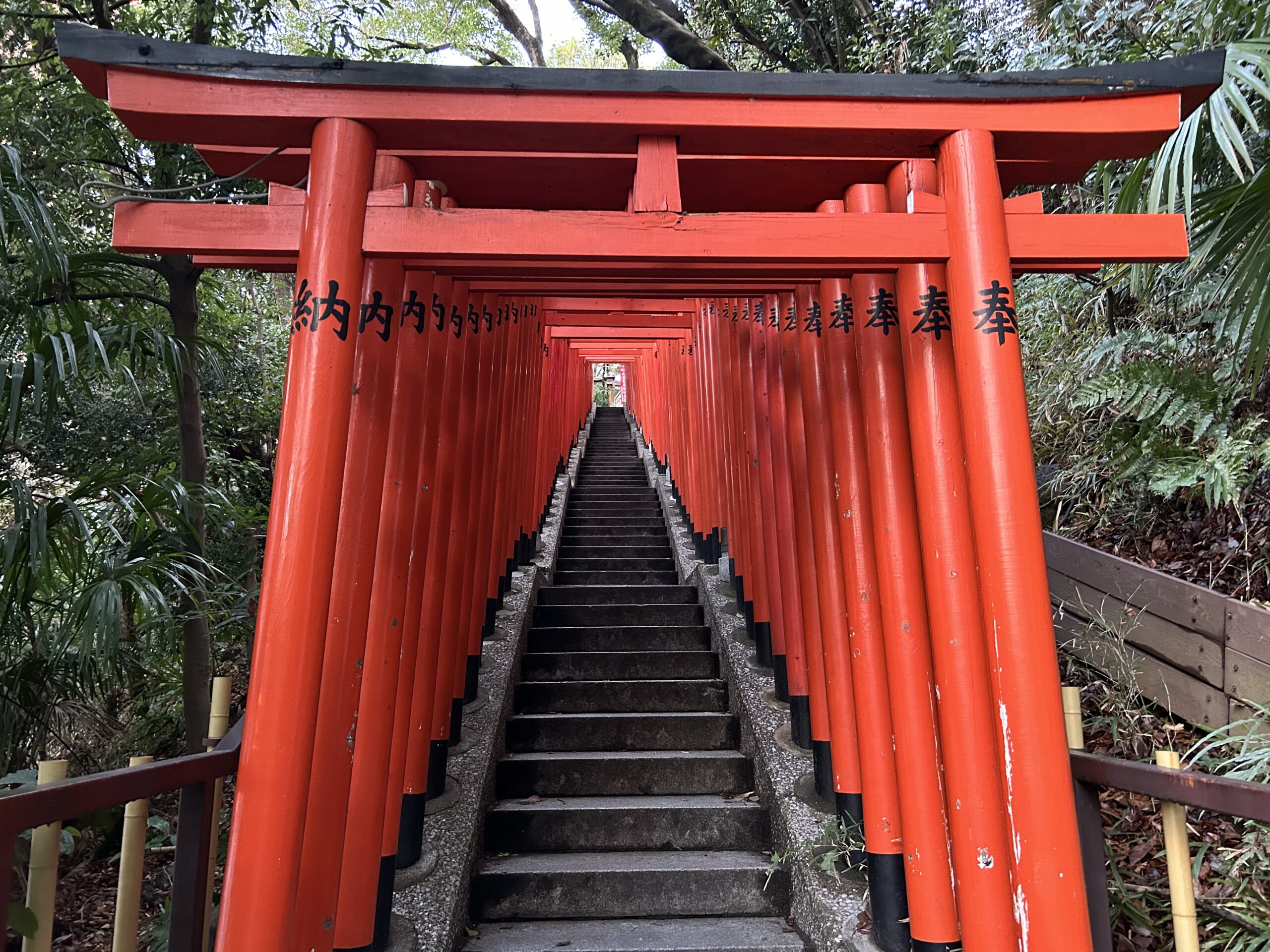
Within the grounds of Hie Shrine, there is one of the few "Senbon Torii" (a thousand torii gates) in Tokyo, captivating visitors with its mystical beauty. Located along the Inari Sando, it is also known as the "Urasando" (rear approach) since it lies almost opposite the Omotesando, where Otoko-zaka is situated.
Passing through the torii gates, a beautiful path of red torii gates known as the Senbon Torii emerges. This series of torii creates a calm and mysterious atmosphere, contrasting with the bright ambiance of the main shrine grounds. As you step into this area, you will feel your heart gradually becoming more tranquil.
The Senbon Torii, located at the back right of the main shrine, is somewhat hidden, making it a bit challenging for visitors to find and adding to its mystical allure.
Yasaka Shrine
Yasaka Shrine, located within Hie Shrine, enshrines Susanoo-no-Mikoto, the god who presides over the sea, storms, and the forces of nature. This sacred southern part of the shrine grounds is bustling with many worshippers. Susanoo-no-Mikoto is known in mythology for overcoming numerous adversities and maintaining his reputation as a hero. He is also revered as a local deity, or Kunitsukami, specific to this land.
The deity Susanoo-no-Mikoto is said to have faced and overcome various challenges throughout his life with great resilience. Therefore, Yasaka Shrine holds special significance as a place that bestows strength and courage to those enduring hardships and adversities.
日枝神社の豆知識
最後に日枝神社の豆知識を見ていきましょう。由緒正しい神社であるからこそ様々な豆知識や憶測があります。それでは見ていきましょう。
日枝神社で祀られているのは山の神 大山咋神
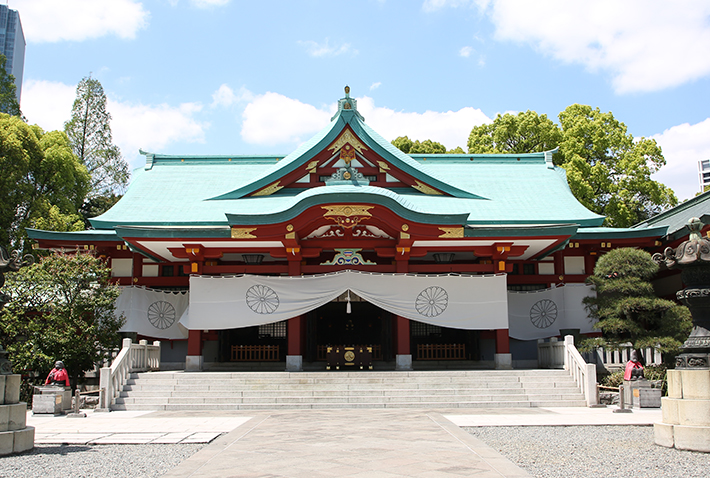
日枝神社において中心的に祀られているのは、山の神様である大山咋神(おおやまくいのかみ)です。この神様は、もともと滋賀県にある比叡山のふもとに位置する日吉大社が起源であり、日枝神社はこの日吉大社から全国へと派生した形で創建されました。そのため、日枝神社では比叡山の守護神である大山咋神が祀られているとされています。
大山咋神は、自然や山々を司る神様としての側面のほかに、人々の日常生活に関わるさまざまなご利益をもたらすと信じられています。特に、縁結びや恋愛成就に関するご利益が有名であり、多くの参拝者が愛と絆の神様として大山咋神を崇拝し、祈願を捧げています。また、安産祈願や子育ての守護もこの神様のご利益とされ、家庭の幸福や子どもの健やかな成長を願う人々にとっても大切な存在です。
さらに、大山咋神は仕事運や出世運の向上、商売繁盛といった経済的な成功や繁栄にも関わる神様とされており、ビジネスを行う人々やキャリアアップを目指す人々からも深い信頼を寄せられています。またスタートの神様とも言われており、何か物事を新しく始める方がお参りに来ることも多いです。これらの多岐にわたるご利益は、日枝神社が多くの人々にとって大切な信仰の対象となっている理由の一つと言えるでしょう。
(Image Citation: 千代田区観光協会)
Sanno Festival: One of Japan's Three Great Festivals
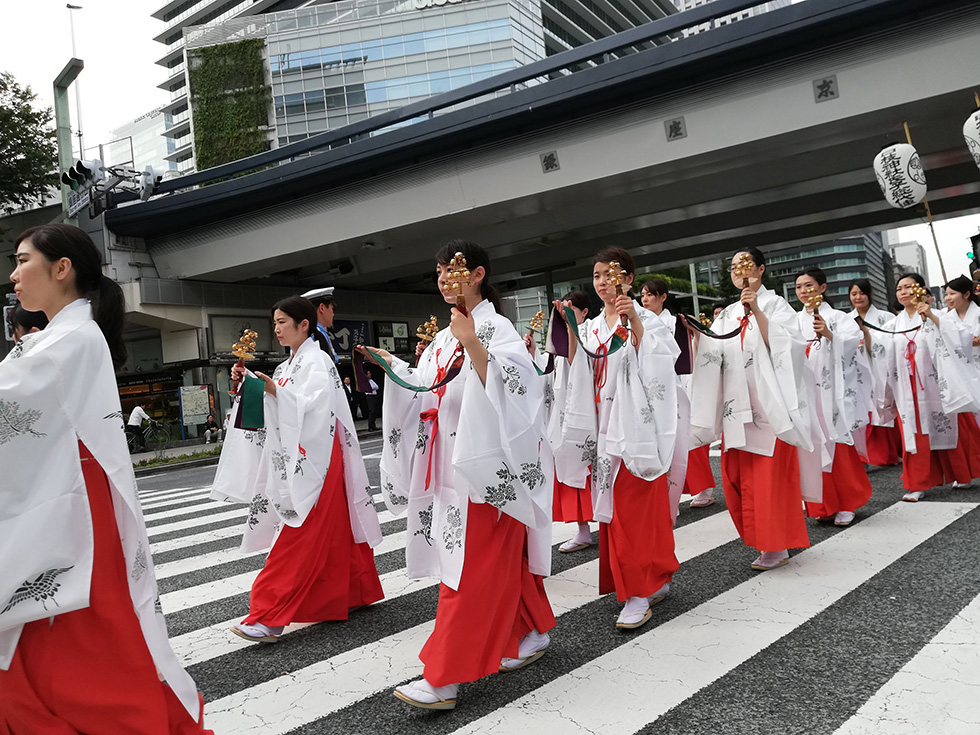
Summary
How was it? This time, we introduced the history, highlights, and trivia of Hie Shrine. With Mount Oyamazumi being enshrined as the god of the mountain and the presence of the sacred monkeys, divine power is said to be abundant, providing blessings, though there are also rumors that it can be intimidating for those sensitive to spiritual energy. The sacred atmosphere, surprising for being in the heart of Tokyo, might overwhelm first-time visitors.
Our website also introduces other interesting aspects of Japanese history and culture beyond Hie Shrine. If you are interested, we would be delighted if you read our other articles as well!




